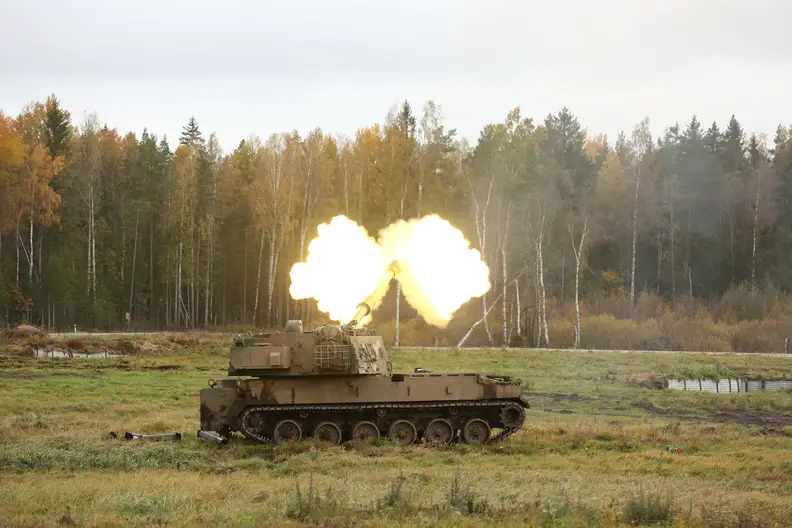In a show of growing military cooperation on NATO’s eastern flank, artillery units from Estonia and Poland recently participated in joint live-fire exercises during the Äkktuli 2024 training event. Hosted by the Estonian Defence Forces (EDF), this exercise marked the first collaboration between the two nations using K9 self-propelled howitzers. The drills were designed to test and refine the capabilities of both conscripts transitioning to reserve service and seasoned reservists. The exercise brought together conscripts from Estonia’s January fire battery and reservists from the 1st and 2nd Infantry Brigades, along with artillery teams from Poland’s 1st Artillery Brigade. The primary focus was on honing indirect fire skills and enhancing the readiness of both Estonian and Polish artillery forces. Estonia and Poland both operate the K9 Thunder self-propelled howitzers, a state-of-the-art 155mm self-propelled howitzer developed by South Korea’s Hanwha Aerospace.
“The main purpose of the exercise was to test the acquired skills of the soldiers going to the reserve and refresh the knowledge of the reservists. As an added value, we were able to practice cooperation with the Polish artillerymen, with whom we have the opportunity to work together in this way for the first time,” Major Meelis Tasa, Deputy Commander of the Estonian Artillery Battalion said.
“Joint training is always positive – we get the opportunity to see Estonian units using equipment similar to ours, and I hope that our Estonian colleagues can learn something from our experience,” said Colonel Roman Piediuk, the Polish defense attaché in Estonia.

The system has become a cornerstone of artillery modernization efforts across NATO’s eastern flank, with both nations investing heavily in K9 systems to bolster their defense capabilities. The K9’s long-range precision fire and modern technology make it an ideal choice for joint drills aimed at strengthening NATO’s collective defense posture. Poland, which has committed to acquiring 672 K9A1 howitzers, is expanding its capabilities in tandem with local production efforts and technology transfers from South Korea. Estonia, for its part, continues to upgrade its fleet of K9s through contracts with Hanwha Defense and Go Craft, ensuring the systems remain at the cutting edge of military technology. The K9 Thunder, along with its K10 Ammunition Resupply Vehicle, forms the backbone of both nations’ artillery forces, ensuring rapid fire support on the battlefield.
The Äkktuli 2024 exercise underscores the growing synergy between Estonian and Polish artillery forces. As NATO enhances its deterrence posture in the Baltic region, joint exercises like this one are crucial in ensuring that member states can operate seamlessly in high-intensity conflict scenarios. The ability to integrate different systems, such as the K9 howitzer, highlights the importance of technical and tactical coordination across NATO forces. For the Estonian conscripts of the January fire battery, this exercise was a capstone event before transitioning to reserve service. For the Polish 1st Artillery Brigade, it represented an opportunity to fine-tune their interoperability with NATO allies. Both sides demonstrated a high level of proficiency, showcasing their preparedness to respond to potential threats in the region.












